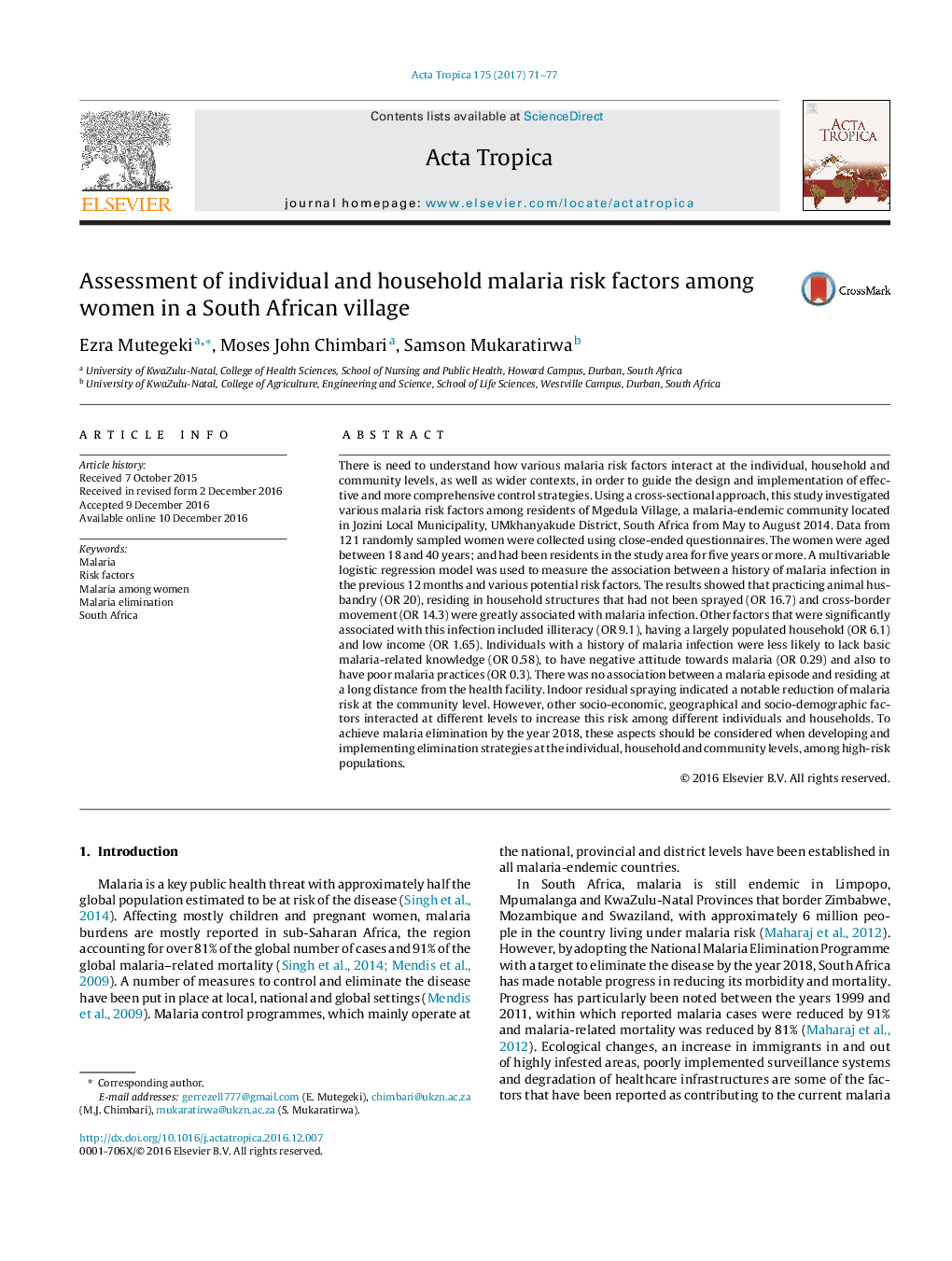| کد مقاله | کد نشریه | سال انتشار | مقاله انگلیسی | نسخه تمام متن |
|---|---|---|---|---|
| 5670741 | 1592749 | 2017 | 7 صفحه PDF | دانلود رایگان |
- Lack of IRS and cross-border movement are greatly associated with malaria infection.
- Other risk factors are illiteracy, largely populated household and low income.
- Infection is associated with poor malaria-related knowledge, attitude and practices.
- IRS shows a prominent reduction in the risk of malaria at the community level.
There is need to understand how various malaria risk factors interact at the individual, household and community levels, as well as wider contexts, in order to guide the design and implementation of effective and more comprehensive control strategies. Using a cross-sectional approach, this study investigated various malaria risk factors among residents of Mgedula Village, a malaria-endemic community located in Jozini Local Municipality, UMkhanyakude District, South Africa from May to August 2014. Data from 121 randomly sampled women were collected using close-ended questionnaires. The women were aged between 18 and 40 years; and had been residents in the study area for five years or more. A multivariable logistic regression model was used to measure the association between a history of malaria infection in the previous 12 months and various potential risk factors. The results showed that practicing animal husbandry (OR 20), residing in household structures that had not been sprayed (OR 16.7) and cross-border movement (OR 14.3) were greatly associated with malaria infection. Other factors that were significantly associated with this infection included illiteracy (OR 9.1), having a largely populated household (OR 6.1) and low income (OR 1.65). Individuals with a history of malaria infection were less likely to lack basic malaria-related knowledge (OR 0.58), to have negative attitude towards malaria (OR 0.29) and also to have poor malaria practices (OR 0.3). There was no association between a malaria episode and residing at a long distance from the health facility. Indoor residual spraying indicated a notable reduction of malaria risk at the community level. However, other socio-economic, geographical and socio-demographic factors interacted at different levels to increase this risk among different individuals and households. To achieve malaria elimination by the year 2018, these aspects should be considered when developing and implementing elimination strategies at the individual, household and community levels, among high-risk populations.
162
Journal: Acta Tropica - Volume 175, November 2017, Pages 71-77
